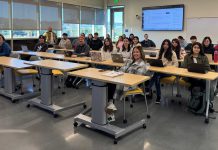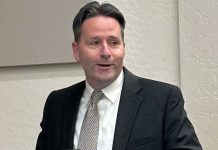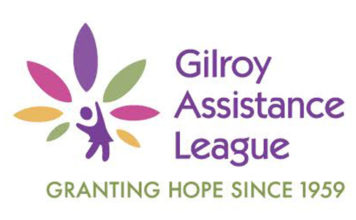GILROY
– Only a fraction of Gilroy students can be considered
”
in shape,
”
based on yet another year’s poor results from the state’s
physical fitness test.
By Lori Stuenkel
GILROY – Only a fraction of Gilroy students can be considered “in shape,” based on yet another year’s poor results from the state’s physical fitness test.
A mere 5.6 percent of fifth-graders are physically fit by state standards. Middle-schoolers were the highest-performing group this year, with 18.6 percent passing the test, while 13.5 percent of ninth-graders passed.
“The scores are not a surprise to me,” said Pat Vickroy, who teaches physical education for the district. “I actually thought that they would be going down.”
Students in grades five, seven and nine took the California Physical Fitness test last spring, performing physical exercises in six fitness categories: aerobic capacity, body composition, abdominal strength, trunk extension, upper-body strength and flexibility. Students who meet all six standards are considered physically fit.
Gilroy elementary students receive one-third of the state-mandated 100 minutes of physical education each week.
“With the district’s continual push to raise (standardized test) scores, and they’re doing it at the expense of so many other subject areas, and this is just another example of data that support that very fact,” Vickroy said.
While middle and high school students receive physical education at least three times each week, students in grades three to five get 30 minutes with a district instructor and classroom teachers are responsible for covering the remaining 70 minutes. Elementary teachers have about 30 minutes at the end of the school day to cover subjects including science, social studies, physical education, art and music. The state does not enforce its time requirements or sanction schools or districts for students failing to meet fitness benchmarks.
“(Gilroy Unified School District is) raising one set of scores at the expense of another set of scores,” Vickroy said, referring to the focus on English-language arts, reading and math test scores. “They’re thinking school is only for literacy and math when we’re supposed to be preparing students for their adulthood for their lifetime, and that includes physical fitness.”
An eight-week training program, Run for Fitness, was re-implemented in elementary schools last month, but is having little affect because teachers do not have time to take students out to run, Vickroy said. The program would ideally help students accumulate extra PE minutes with teachers during school hours, or with family at home.
A Run for Literacy that was planned for Love of Literacy Week, beginning Nov. 17, was canceled recently because students are not receiving training for the several-mile run, Vickroy said. A Run for Literacy committee, which included teachers and parents, decided to call off the event.
“The committee was concerned that the elementary levels were not allocating enough time for PE,” said John Perales, Mt. Madonna High School principal and committee member. Perales said the committee realizes there is not enough time for physical education minutes but would still like to have a run in the future to draw attention to the need for more physical activity.
Meanwhile, a physical education committee formed last fall to develop a PE curriculum and create lessons for classroom teachers has not met this school year because students were expected to participate in Run for Fitness.
“We have put into all the schools the masters for the whole Run for Fitness curriculum, and that was going to take (teachers) … from the start of school through winter break,” said Jacki Horejs, assistant superintendent of educational services.
Vickroy has said that Run for Fitness should only be one component of the elementary physical education curriculum. He developed some PE lessons for teachers but would like to see the district adopt a complete curriculum and provide more training for teachers.
Horejs said teachers may be offered evening or Saturday training when more PE lessons are available.
This is the fourth year that the state has required schools to report physical fitness test results, with the exception of the 1999-2000 school year.
Gilroy fifth-graders turned out their best performance in 1998-99, the first year for reporting the test. That year, 17.4 percent passed the test. Two years later, as seventh-graders, that number dropped to 12.2 percent. They fared slightly better as ninth-graders this spring, when 13.5 percent were considered fit.
Seventh-graders also improved over their fifth-grade scores this year, with 18.6 meeting all six standards, up from 7.2 percent two years ago.
The increase doesn’t offer Vickroy much encouragement.
“If you look at the scores overall and what they represent, then it’s a bleak picture,” Vickroy said. “Students at the (middle school) and high school levels have PE every day and those are low numbers.”
Overcrowded physical education classes at the secondary level make it difficult for instructors to properly address fitness standards, Vickroy said. Instead, they focus on group sports activities.
Gilroy students fared worse than students statewide, who also demonstrate sub-par fitness levels – fewer than one-third of students in all three grades are considered fit.
“These results are quite discouraging and show that the fitness level of students in California public schools remains low,” state Superintendent Jack O’Connell said.
Nationwide, childhood obesity and type 2 diabetes are reaching epidemic levels. Physicians expect the number of type 2 diabetes cases to continue to rise as children become increasingly obese and inactive, according to the American Academy of Pediatrics. The Centers for Disease Control says that obesity is the top health threat in the United States today.
With information like that, Vickroy is in disbelief that the California Department of Education does not hold districts accountable for PE results or fund more fitness programs.
“And they continue to test the students when they know that the results are going to be the same without programs to help out,” Vickroy said.














